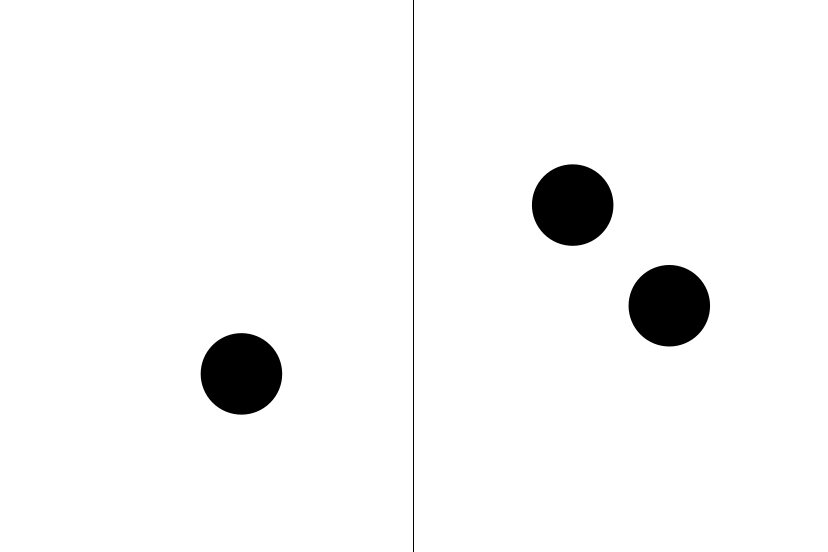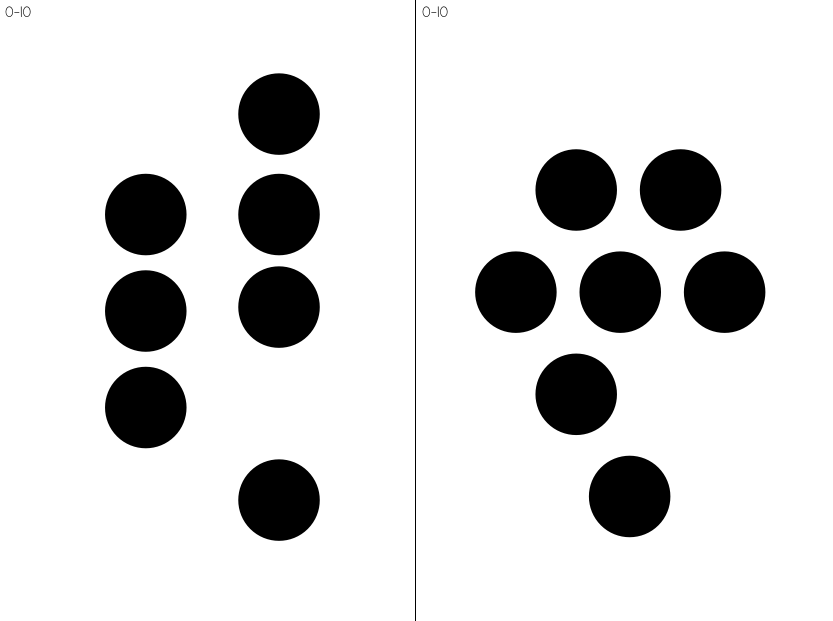Subitizing & Quick Dots....for Big Kids?
Subitizing. It’s our favorite new mathematical buzz word.
Subitizing is basically the ability to quickly conceptualize quantity. Subitizing helps students use their natural approximate number system (learn more about this natural math ability through the Natural Number course!) and connect that sense of quantity to the digits we have created for them.
Just because kids can count does not mean they know number any more than a kid who sings the alphabet knows phonics. A kid who can write numbers doesn’t know number any more than a kid who writes letters knows phonics.
There has to be more tie to this sense of quantity. What these numbers truly are, how they relate, and how they are units.
Many of us are already on the subitizing train. Quick dots are a great number talk for young students. You show a dot card for 3-5 seconds and ask students to describe what they see and how they see it. This can lead to some great discussions related to additive thinking. For example, I can see 8 as 4 and 4 or 5 and 3 or 6 and 2, etc. This facilitates divergent mathematical thinking which will depend conceptual understanding when students need to use number to reason in problems.
If you teach a younger grade, I truly hope you use quick dots every day. If not, you should stop here, learn more, and get started!
If you teach an older grade, I know what you are thinking…
”Does not apply to me!” or “well, for my struggling math group…but nobody else"…my kids have early number sense”
Well, well, well, WELCOME. I’m going to show you how quick dot activities are actually extremely beneficial for any grade, any developmental level, any time.
So, let’s break quick dot/subitizing tasks down a bit to walk through it. When I speak of quick dots, I mean showing students an image of dots for 3-5 seconds. They can get multiple looks, but the looks should be short so students are note resorting to rote counting. They should not be given time to count.
Quick Dots for Early Number (0-5)
At this early stage, quick dots are to help students develop a sense of quantity. They can see that 2 is 2 no matter how it looks because 2 is a quantity of items. Young students need many experiences with dots 0-5 to build a strong foundation.
2. Quick Dots for Conceptual Number (0-20)
At the next stage, students use their deep sense of 0-5 to subitize 0-20. They can see the numbers in many different ways and begin to express this by writing expressions like “I saw 15 and 5…that’s 20! 15 + 5 = 20” Another student could see ten and ten (10 + 10). Students are using their early number sense to build sense of larger numbers.
3. Quick Dots for Place Value (0-10,000)
Finally, students can start using quick dots to understand even LARGER numbers. This should happen AFTER students have a deep sense of 10, which can be built through conceptual number quick dots. Students can see multiple tens and “extra” (Ones” the create a multi-digit number. This lends to a deep understanding of expanded form and the true value of numbers which aids in all algebraic thinking (adding, subtracting, comparing, etc.)
4. Quick Dots for Multiplicative Thinking (0-144)
There are a lot of misconceptions around multiplicative thinking and what it is. Multiplicative thinking is its own type of thinking that does not use additive processes. So, although skip counting and repeated addition are good connecting strategies, these alone are not actually helping students thinking multiplicatively. When skip counting, most students are actually still just adding up, which is keeping them in additive (part, whole/joining) thinking. I like to describe multiplicative thinking as a brain’s ability to copy and paste. To see an image, copy it and paste it and know what that is, copy and paste more and more and more. Multiplicative thinking involves a lot of doubling, creating fives, creating tens, taking groups off and putting groups on, etc. It’s all about GROUPS. The groups become the “number”. I always know when a student has moved away from additive thinking toward multiplicative thinking when they say “oh…there’s 6 fives” instead of “6 groups of 5” or “6 five times”. I know, this is the language we use a lot and it is helpful when they are transitioning - but at some point, they need to transition. This means they need to be able to unitize - to think of a group of things as its own separate parts and also be able to see it as a unit. Quick dots is the number one way I help my students make that transition. Because they don’t have time to count, and they want to be quick, they are almost forced to start thinking in units. You can see how all these subitizing skills are building upon each other because to be able to think quickly about groups of dots, students need to know those quantities well. After all, how are they going to say “I can see 6 groups of 5” if they don’t know quickly that quantity is 5?
Oh, and arrays? That’s just multiplicative thinking in a rectangular shape. Like this:
See? Still 6 fives! Just positioned in a different way. And using these in a quick look activity, again, encourages (that’s better than forces!) students to look for units (groups) and think multiplicatively.
A strong multiplicative thinker might say “I see fives. I saw there were 2 fives (the first 2 columns) and I know that is 10, then I saw another 2 fives, another 10 so that was 20 and another 2 fives (10) so 30. Using their fives, they are creating groupings that build upon each other.
5. Quick Dots for Expression Building
Finally, quick dots are a fantastic way to build algebraic thinkers. If you teach upper elementary or middle school algebra, using quick dots is a great way to begin writing expressions.
In this example, I created what I saw as 4 sevens but the sevens could be broken into fives and twos. Think of how much distributive property work is imbedded in this.
After students see and explain what they saw…it’s time to turn that into an expression! Everybody may have a different expression but they all create 28.
When students begin writing what they see in expressions, they are using all the subitizing work they did for number in an algebraic way and can begin problem solving - Which is the ultimate goal!
I hope this convinces you that subitizing and quick dot activities don’t need to taper off in 2nd grade but continue going strong to build algebraic thinking!
Let me know how you use quick dots activities in your classroom by tagging @aubreeteaches on instagram!
HAPPY TEACHING!













